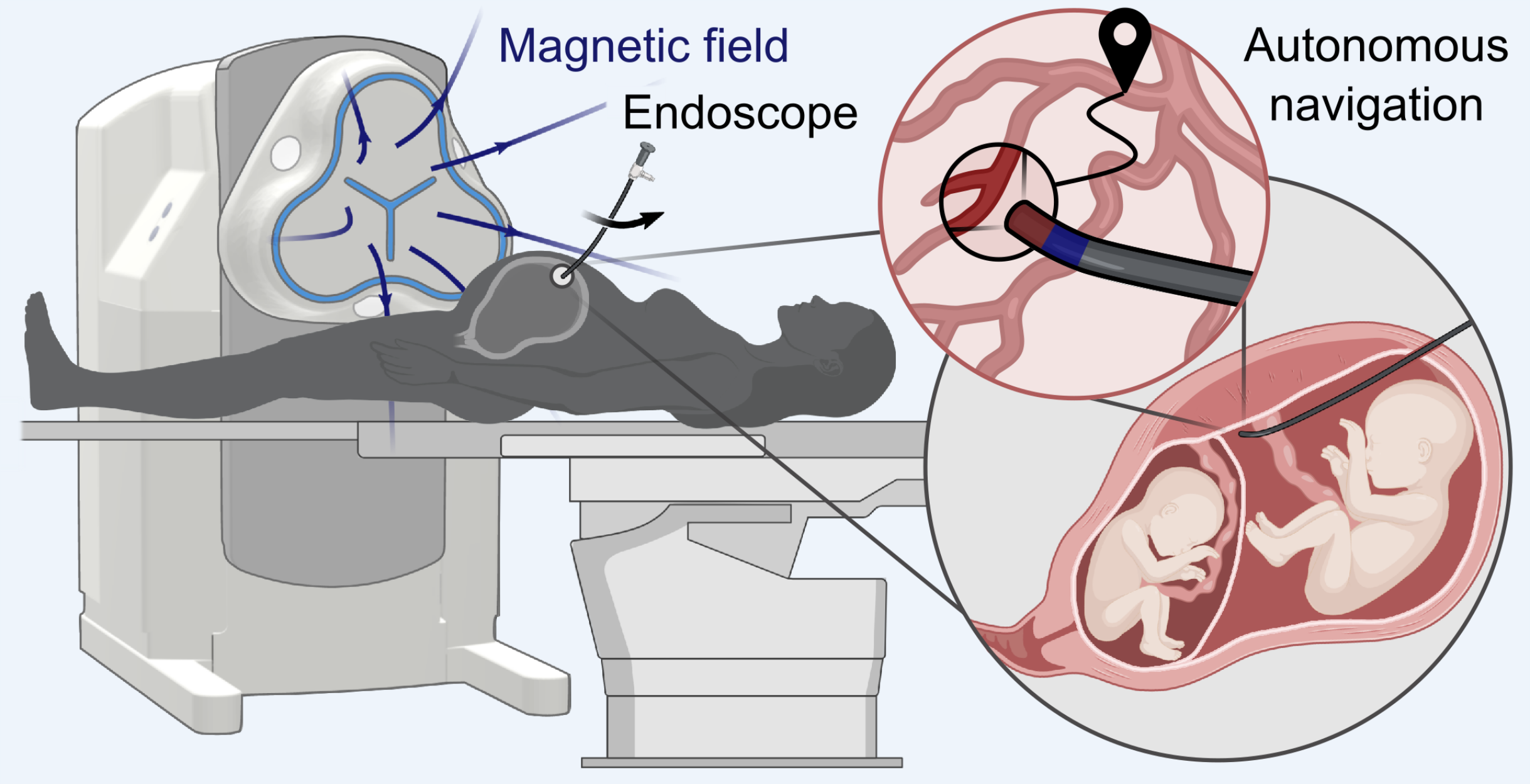Autonomous Magnetic Navigation in Endoscopic Image Mosaics

Abstract
Endoscopes navigate within the human body to observe anatomical structures with minimal invasiveness. A major shortcoming of their use is their narrow field-of-view during navigation in large, hollow anatomical regions. Mosaics of endoscopic images can provide surgeons with a map of the tool’s environment. This would facilitate procedures, improve their efficiency, and potentially generate better patient outcomes. The emergence of magnetically steered endoscopes opens the way to safer procedures and creates an opportunity to provide robotic assistance both in the generation of the mosaic map and in navigation within this map. This paper proposes methods to autonomously navigate magnetic endoscopes to 1) generate endoscopic image mosaics and 2) use these mosaics as user interfaces to navigate throughout the explored area. These are the first strategies, which allow autonomous magnetic navigation in large, hollow organs during minimally invasive surgeries. The feasibility of these methods is demonstrated experimentally both in vitro and ex vivo in the context of the treatment of twin-to-twin transfusion syndrome. This minimally invasive procedure is performed in utero and necessitates coagulating shared vessels of twin fetuses on the placenta. A mosaic of the vasculature in combination with autonomous navigation has the potential to significantly facilitate this challenging surgery.